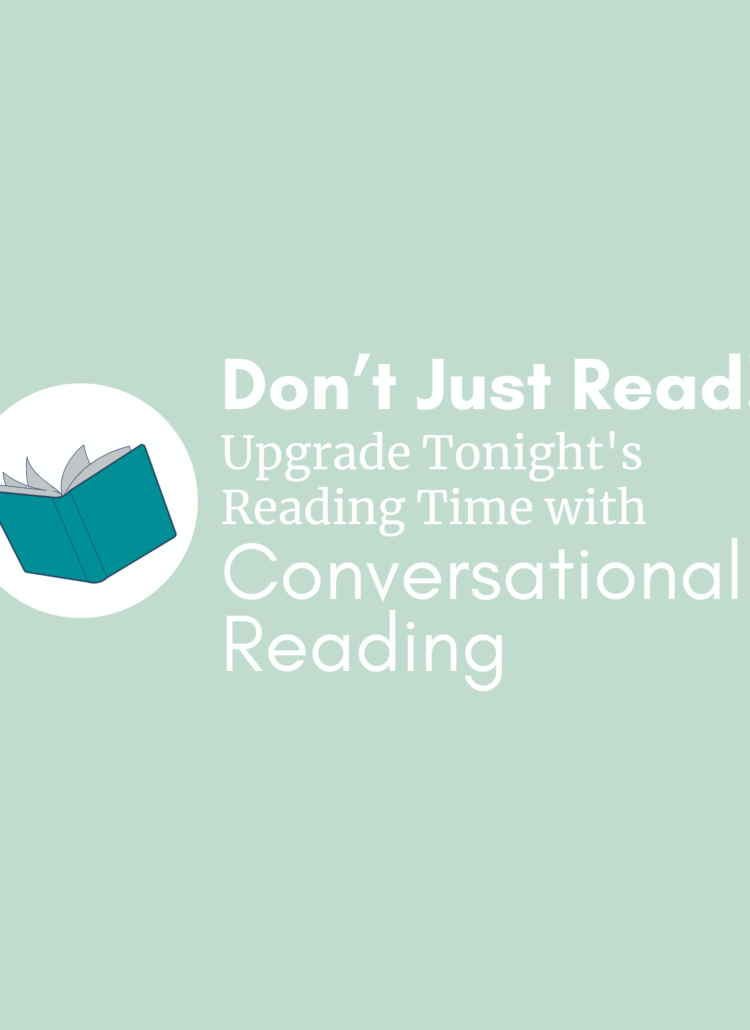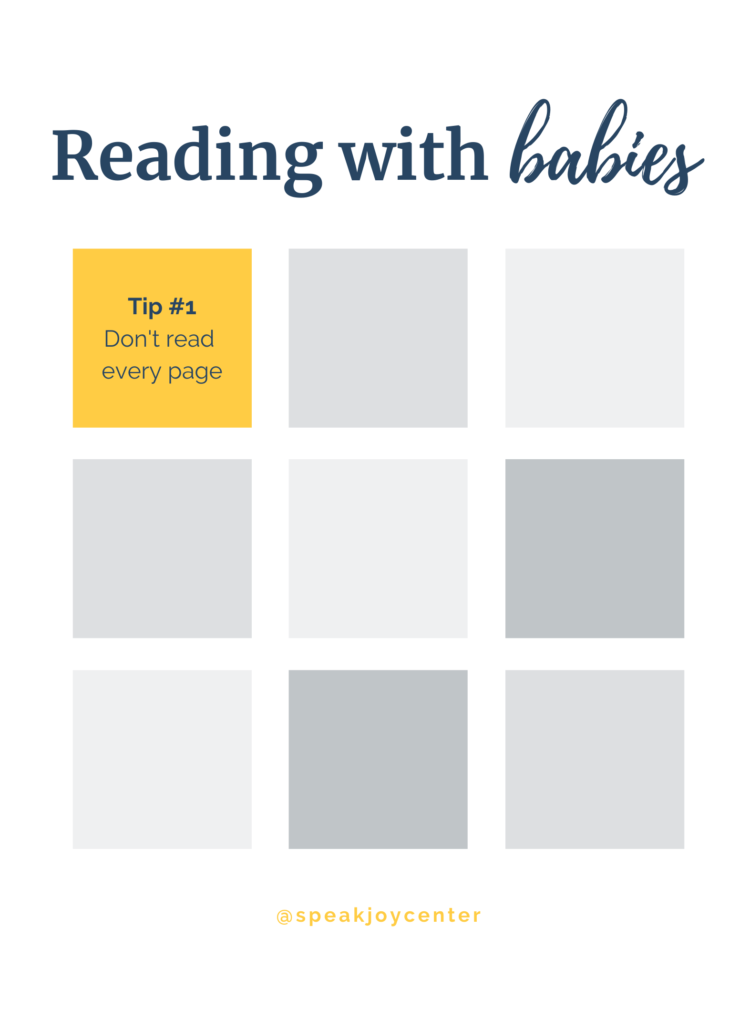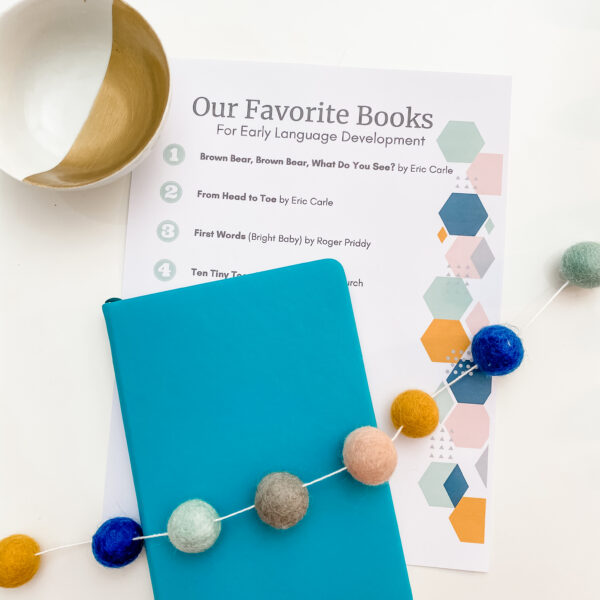
I have worked with toddlers for decades.
But I recently realized that my personal board book library was woefully insufficient and a little sad.
So, I set out on a mission to grow my board book library and established a tiny budget for this project.
I found great board books at thrift stores.
I found great board books at library sales.
And I found great board books on Thriftbooks. {My new love for Thriftbooks is real!}
As my little collection has grown, I have learned a few things; specifically, what to look for and what to avoid.
Here is a summary of the lessons I have learned:
WHAT TO AVOID
1. Avoid all books that can be torn or have tear-able parts.
For infants and toddlers, books with regular paper pages just won’t cut it. So, avoid them at all costs.
This makes board books a good option. But watch out for board books with flaps.
I avoid books with flaps like the plague!
I know this sounds like blasphemy, but there are many reasons for this.
First, the fine motor control needed to purposely lift the flaps is beyond the skills of most infants and toddlers.
In their precious enthusiasm, most young children tear the flaps off or rip the base of the flaps. This leads us to the next problem.
Second, to avoid the tearing of the flaps, most adults reading lift-the-flaps books try to tightly control the child’s access to the flaps while reading together.
This puts adults and children reading these kinds of books into a tug-of-war of who has control of the book.
We can skip ALL this turmoil by simply avoiding books with flaps for young children.
I sadly acknowledge that most Spot books have flaps. And I love Spot books. But the tug-of-war isn’t worth it. Unless you are OK with torn flaps! 🙂
Just a quick note: There are so many beautiful, fun, books with flaps designed for older children. This makes sense to me!
Older children have the fine motor skills to access these books and the flaps are so fun! So, keep your flap books for older children.
2. Avoid board books with complex illustrations.
Many picture books have beautiful, detailed illustrations.
They just don’t work in board book format.
For example, I LOVE the beautiful illustrations in The Napping House by Audrey Wood.
One of the wonderful things about the illustrations in this book is the detail of the tiny mouse and the even tinier flea on each page. It is delightful for young children to look for and find these small creatures as the book progresses.
But when you put those beautiful illustrations into board book format, the scale is reduced, and those tiny details get lost.
Books with complex illustrations are best enjoyed in the format for which they were designed, usually in hardback in a larger format.
So, save The Napping House and other books with beautiful, complex illustrations for your child when she is a little older and find other books for your toddler for now.
3. Avoid books with complex storylines.
Your level of success reading to your toddler will decline with more complex storylines, so avoid them.
If Big Can . . . I Can by Beth Shoshan and Petra Brown is a great book – but not great for toddlers.
This book repeatedly uses “If, Then” statements.
Although historically it was thought that children were able to understand “If, Then” statements at age 4 or 5, a recent 2021 study from the University of British Columbia found that children around age 3 are able to understand “If, Then” statements (Ling, Wong, & Diamond, 2021).
So, this is book is great for a child who is 3 years old or older! But not so great for an infant or toddler.
Save this book, and others with complex storylines, for when your child is a bit older.
WHAT TO LOOK FOR
1. Seek out durable books.
Durability is king when it comes to toddlers!
Board books fit this bill perfectly and are a great option.
The pages hold up well to a lot of wear and tear.
Board books can still be ripped apart (I am a witness), but it takes a bit of concerted effort.
Another great option are Indestructibles. These books are made from coated paper and they are . . . well, indestructible!
The pages can’t be ripped or torn.
They can be mouthed by infants without a problem.
They can be wiped clean with ease.
They are light weight which is great if you have a child that tends to throw books.
A favorite in the Indestructibles series is Baby Night-Night by Kate Merritt.
The durability from board books and Indestructibles work well for toddlers.
2. Seek out books with subjects that are familiar to toddlers.
Toddlers are captivated by subjects and events that show up in their daily routines.
The more familiar the subject, the more likely the toddler will connect what is being learned to daily events and routines.
I suggest looking for books that center around mealtime, family members, body parts, and pets.
One great example of this is Peekaboo Morning by Rachel Isadora.
While books about zoo animals and outer space are fun and could be educational, they are better held until your child is a little older.
3. Seek out books with photos or simple illustrations.
Photos of real objects are fantastic from a developmental point of view.
Depending on the age of the infant or toddler, photographs and simple line drawings are easier to understand than complex illustrations (Namy, Cambell, & Tomasello, 2004).
So, for infants and toddlers, I suggest looking for books with photographs or simple line drawings.
You can’t go wrong with any of Helen Oxenbury’s books, if you want a good place to start. Her books often feature line drawings of young children engaged in simple, daily activities. Tickle, Tickle is a favorite.
Another suggestion is Colors (Bright Baby) by Rodger Priddy, which features simple, clear photographs of common objects.
Resources
Ling, D.S., Wong, C.D., & Diamond, A. (2021). Children only 3 years old can succeed at conditional “If, Then” reasoning, much earlier than anyone had thought possible. Frontiers in Psychology, 11. https://doi.org/10.3389/fpsyg.2020.571891
Namy, L.L., Cambell,A.L. & Tomasello, M. (2004). The changing role of iconicity in non-verbal symbol learning: A U-shaped trajectory in the acquisition of arbitrary gestures. Journal of Cognition and Development, 5(1), 37-57. https://doi.org/10.1207/s15327647jcd0501_3
Image attribution
Book Shelf icon by Icons8





